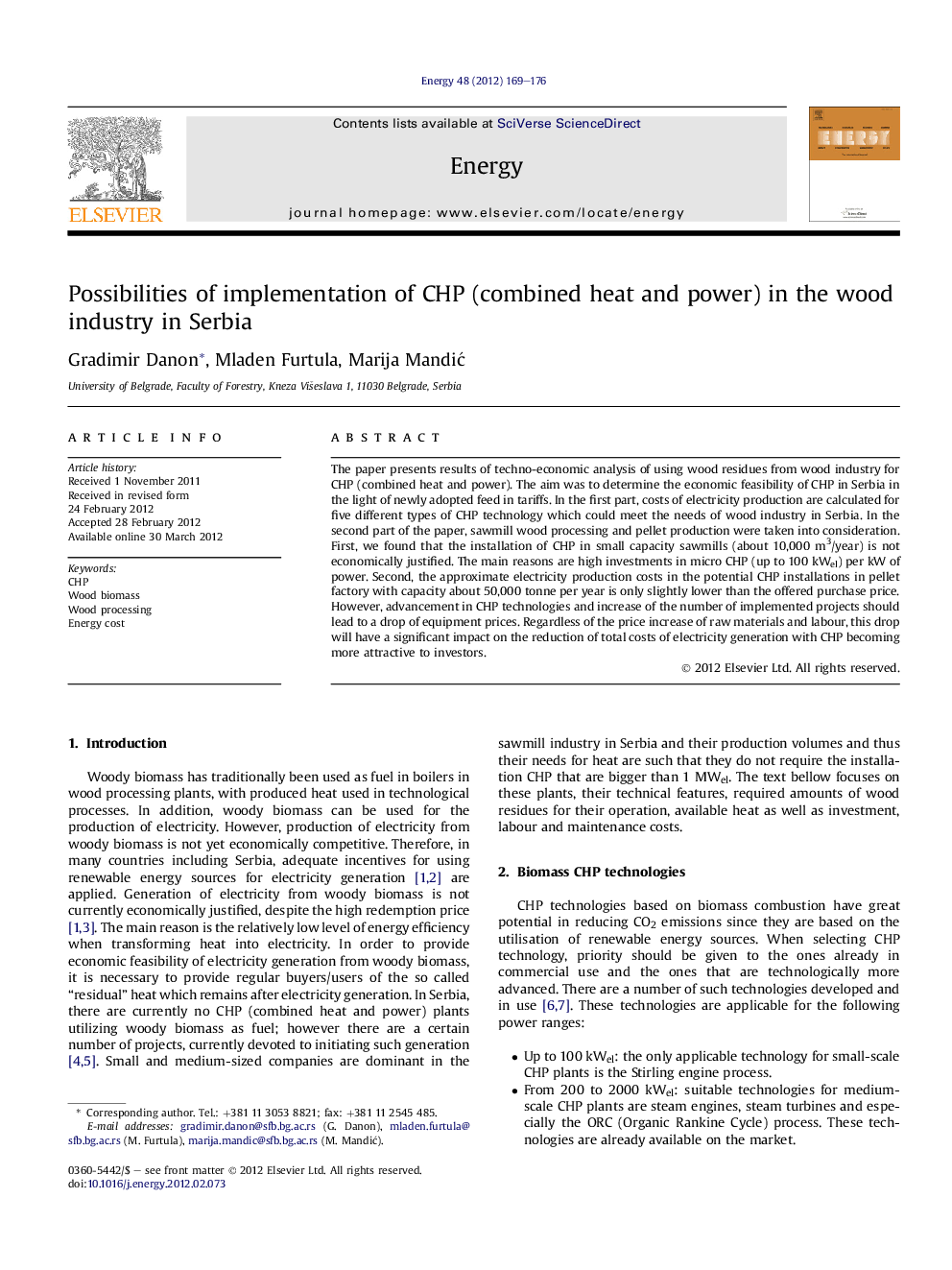| Article ID | Journal | Published Year | Pages | File Type |
|---|---|---|---|---|
| 1733338 | Energy | 2012 | 8 Pages |
The paper presents results of techno-economic analysis of using wood residues from wood industry for CHP (combined heat and power). The aim was to determine the economic feasibility of CHP in Serbia in the light of newly adopted feed in tariffs. In the first part, costs of electricity production are calculated for five different types of CHP technology which could meet the needs of wood industry in Serbia. In the second part of the paper, sawmill wood processing and pellet production were taken into consideration. First, we found that the installation of CHP in small capacity sawmills (about 10,000 m3/year) is not economically justified. The main reasons are high investments in micro CHP (up to 100 kWel) per kW of power. Second, the approximate electricity production costs in the potential CHP installations in pellet factory with capacity about 50,000 tonne per year is only slightly lower than the offered purchase price. However, advancement in CHP technologies and increase of the number of implemented projects should lead to a drop of equipment prices. Regardless of the price increase of raw materials and labour, this drop will have a significant impact on the reduction of total costs of electricity generation with CHP becoming more attractive to investors.
